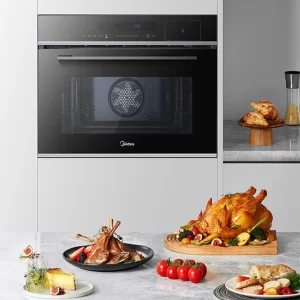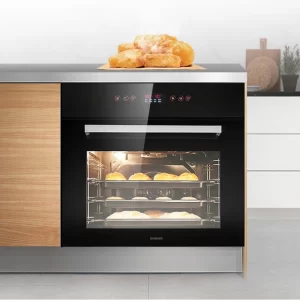How do air fryer ovens work?
Introduction:
Air fryer ovens have gained significant popularity in recent years as a healthier alternative to traditional deep frying. These versatile appliances allow users to enjoy crispy and delicious foods with less oil. But how exactly do air fryer ovens work? In this article, we will explore the mechanics and functionality of air fryer ovens, discussing their key components, cooking process, advantages, and potential limitations. By understanding how air fryer ovens work, users can make informed decisions about incorporating this innovative cooking appliance into their culinary routine.
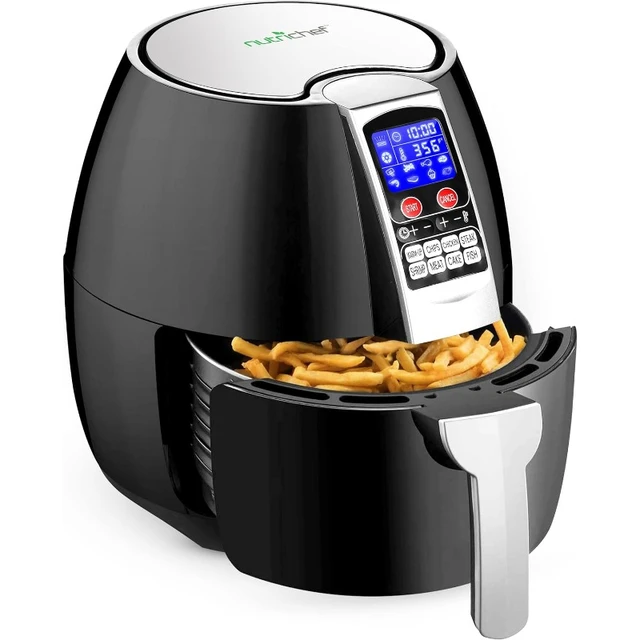
How do air fryer ovens work?
Understanding Air Fryer Oven Technology:
a. Overview: Air fryer ovens utilize a combination of convection cooking, high-temperature air circulation, and a cooking chamber design to mimic the effects of traditional deep frying with significantly less oil.
b. Key Components: Air fryer ovens consist of several essential components, including heating elements, a fan, a cooking chamber, and a removable cooking basket or tray.
Convection Cooking:
a. Convection Technology: Air fryer ovens employ convection cooking, which involves the circulation of hot air around the food. This promotes faster and more even cooking by transferring heat more efficiently.
b. Heating Elements: Air fryer ovens are equipped with heating elements that generate the hot air required for cooking. These elements can be located at the top, bottom, or both to ensure uniform heat distribution.
c. Fan System: A powerful fan is situated within the air fryer oven, which circulates the hot air rapidly throughout the cooking chamber. This continuous circulation facilitates even heat distribution and eliminates the need for flipping or rotating food during cooking.
Unique Cooking Chamber Design:
a. Compact Cooking Space: Air fryer ovens have a compact cooking chamber that allows for efficient heat transfer. The small space concentrates the hot air around the food, ensuring quick and thorough cooking.
b. Ventilation: Air fryer ovens are designed with ventilation openings that allow excess moisture and hot air to escape during cooking. This helps prevent a buildup of steam and ensures that the food becomes crispy rather than soggy.
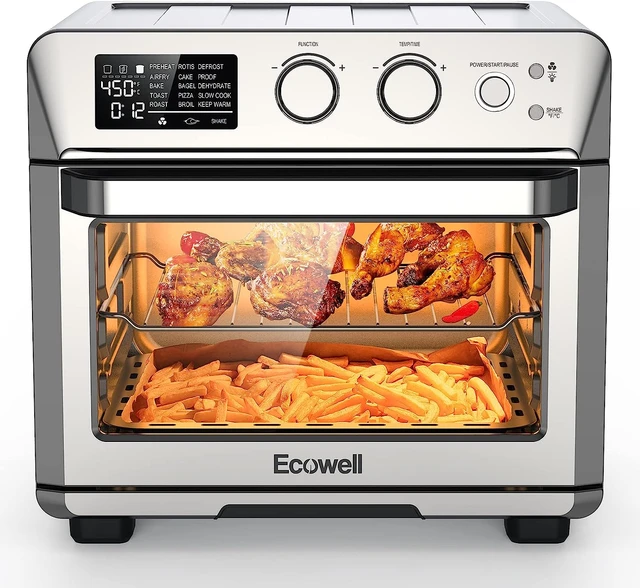
Cooking Process with an Air Fryer Oven:
a. Preheating: Air fryer ovens typically require preheating before placing the food inside. This ensures that the cooking chamber reaches the desired temperature, promoting optimal cooking results.
b. Food Placement: Food is placed in the cooking basket or on the cooking tray, ensuring that it is spread out in a single layer. This allows hot air to circulate around each piece, promoting even and consistent cooking.
c. Cooking Time and Temperature: The desired cooking time and temperature are selected based on the specific food being prepared. Air fryer ovens often feature pre-programmed settings for popular dishes, or users can manually adjust the time and temperature as needed.
d. Cooking Progress: As the air fryer oven operates, the fan circulates hot air at a high speed, rapidly heating the food. The hot air effectively transfers heat to the food, resulting in a crispy exterior while maintaining moisture in the interior.
e. Flipping or Shaking: Depending on the recipe or personal preference, it may be necessary to flip or shake the food midway through the cooking process. This ensures even browning and crispiness on all sides.
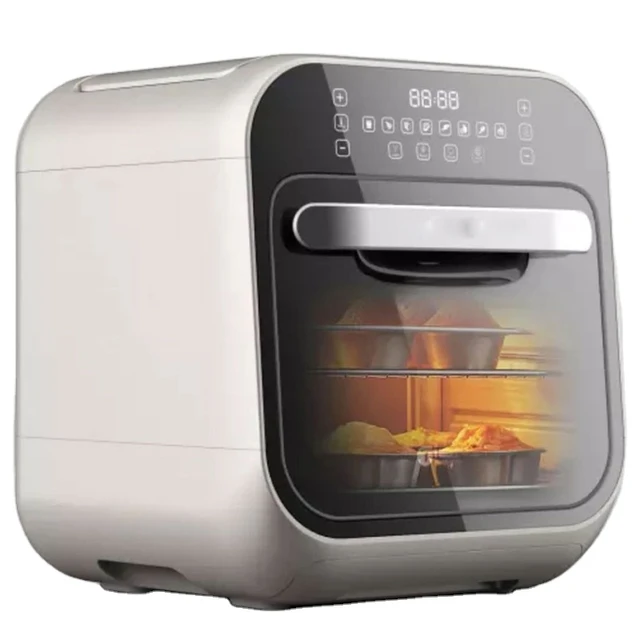
Advantages of Air Fryer Ovens:
a. Healthier Cooking: Air fryer ovens require significantly less oil compared to traditional deep frying methods. This reduction in oil consumption contributes to healthier cooking while still achieving a desirable crispy texture.
b. Versatile Cooking: Air fryer ovens offer versatility in cooking a wide range of foods, including fries, chicken wings, vegetables, fish, and even baked goods. They can be used for frying, roasting, baking, grilling, and reheating, making them a versatile addition to any kitchen.
c. Faster Cooking Times: The combination of convection cooking and rapid air circulation in air fryer ovens results in faster cooking times compared to conventional ovens. This can be particularly beneficial for busy households or quick meal preparation.
d. Energy Efficiency: Air fryer ovens are energy-efficient since they require shorter cooking times and reach desired temperatures quickly. This can lead to cost savings on energy bills.
e. Easy Cleanup: Air fryer ovens are designed with detachable cooking baskets or trays, making them easy to clean. Many models also feature non-stick coatings, reducing the likelihood of food sticking to the surface.
Potential Limitations and Considerations:
a. Capacity Limitations: Air fryer ovens typically have a limited cooking capacity due to their compact size. Large quantities of food may require multiple batches or may not fit inside certain models.
b. Texture Differences: While air fryer ovens produce crispy results, they may not replicate the exact texture of deep-fried foods. The absence of a large amount of oil can result in a slightly different mouthfeel and taste.
c. Learning Curve: Users may need to experiment and adjust cooking times and temperatures to achieve their preferred level of crispiness and doneness. This learning curve can vary depending on the specific air fryer oven model and the types of food being cooked.
d. Food Preparation: Some recipes may require pre-treatment, such as lightly coating food with oil or using a breading mixture, to achieve optimal results in an air fryer oven. Following recipe instructions is essential for achieving the desired outcome.
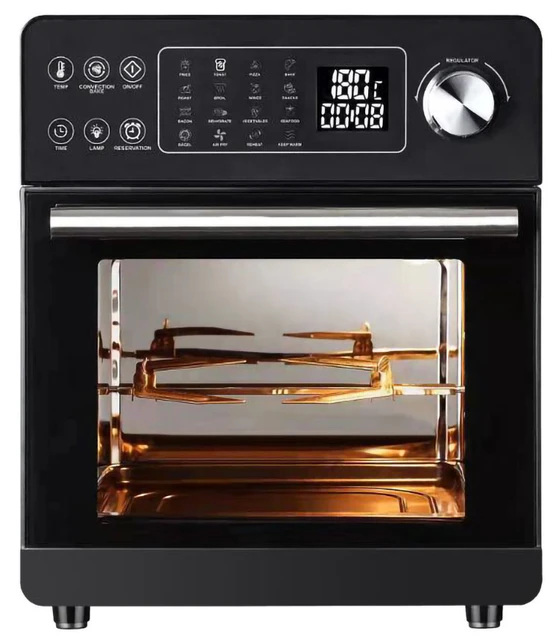
Tips for Using an Air Fryer Oven:
a. Preheat the Oven: Preheating the air fryer oven ensures that it reaches the desired cooking temperature before placing the food inside. This helps ensure even and consistent cooking results.
b. Avoid Overcrowding: To achieve optimal cooking and crispy results, avoid overcrowding the cooking basket or tray. Leaving enough space between food items allows for proper air circulation and even cooking.
c. Shake or Flip the Food: For certain recipes, shaking or flipping the food halfway through the cooking process can help ensure even browning and crispiness on all sides.
d. Use Cooking Spray or Lightly Coat with Oil: While air fryer ovens require less oil than traditional frying methods, lightly coating the food with oil or using a cooking spray can enhance the crispiness and prevent sticking.
e. Experiment with Cooking Times and Temperatures: Every air fryer oven may have slight variations in cooking performance. It is recommended to start with the recommended cooking times and temperatures in recipes and make adjustments based on personal preference and the specific model being used.
f. Preheat Frozen Foods: When cooking frozen foods, it is generally recommended to preheat the air fryer oven for a few minutes before placing the frozen food inside. This helps ensure even cooking and avoids a temperature shock.
g. Clean the Air Fryer Oven Regularly: Proper maintenance and regular cleaning of the air fryer oven are essential. Clean the cooking basket or tray, remove any food residue, and wipe down the interior after each use. Refer to the manufacturer’s instructions for specific cleaning guidelines.
Safety Considerations:
a. Follow Manufacturer’s Instructions: Always read and follow the manufacturer’s instructions for operating and maintaining the air fryer oven. This ensures safety and optimal performance.
b. Avoid Placing Flammable Materials Nearby: Air fryer ovens generate heat during operation. Keep flammable materials such as kitchen towels, plastic, or paper products at a safe distance from the oven to prevent accidents.
c. Use Oven Mitts or Heat-Resistant Gloves: The air fryer oven can become hot during cooking. To avoid burns or injuries, use oven mitts or heat-resistant gloves when handling the hot cooking basket or tray.
d. Keep Children and Pets Away: Ensure that children and pets stay away from the air fryer oven during operation and when it is hot. The exterior and cooking elements can reach high temperatures that pose a burn risk.
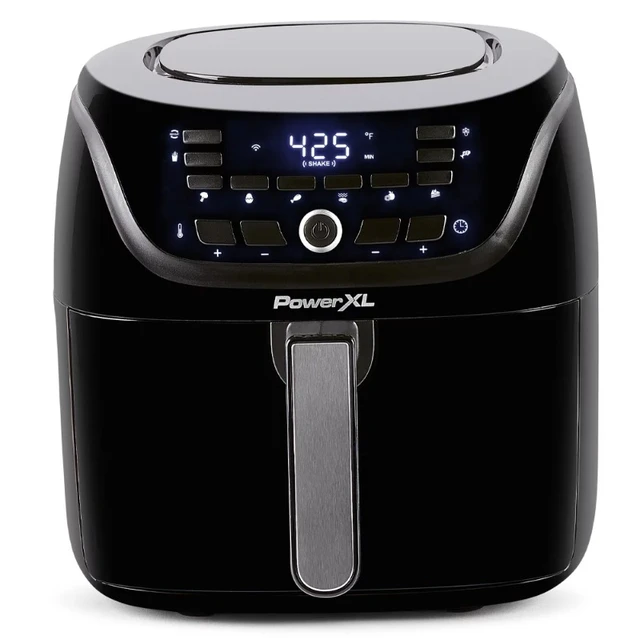
Conclusion:
Air fryer ovens utilize a combination of convection cooking, high-temperature air circulation, and a compact cooking chamber design to achieve crispy and delicious results with minimal oil. These appliances are versatile, energy-efficient, and offer faster cooking times compared to traditional methods. While they have some limitations, such as smaller cooking capacities and potential texture differences, air fryer ovens provide a healthier alternative to deep frying without sacrificing taste. By understanding the mechanics and cooking process of air fryer ovens, users can confidently incorporate these innovative appliances into their culinary repertoire.
